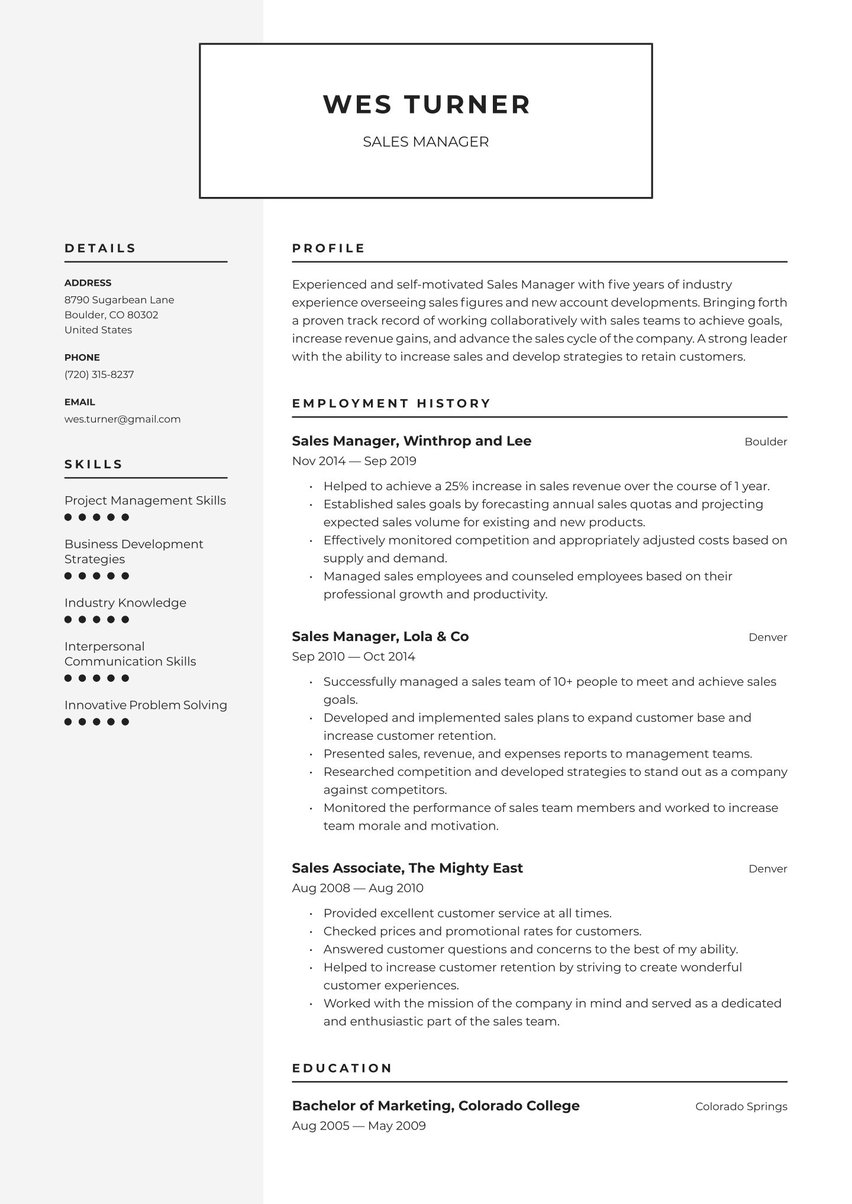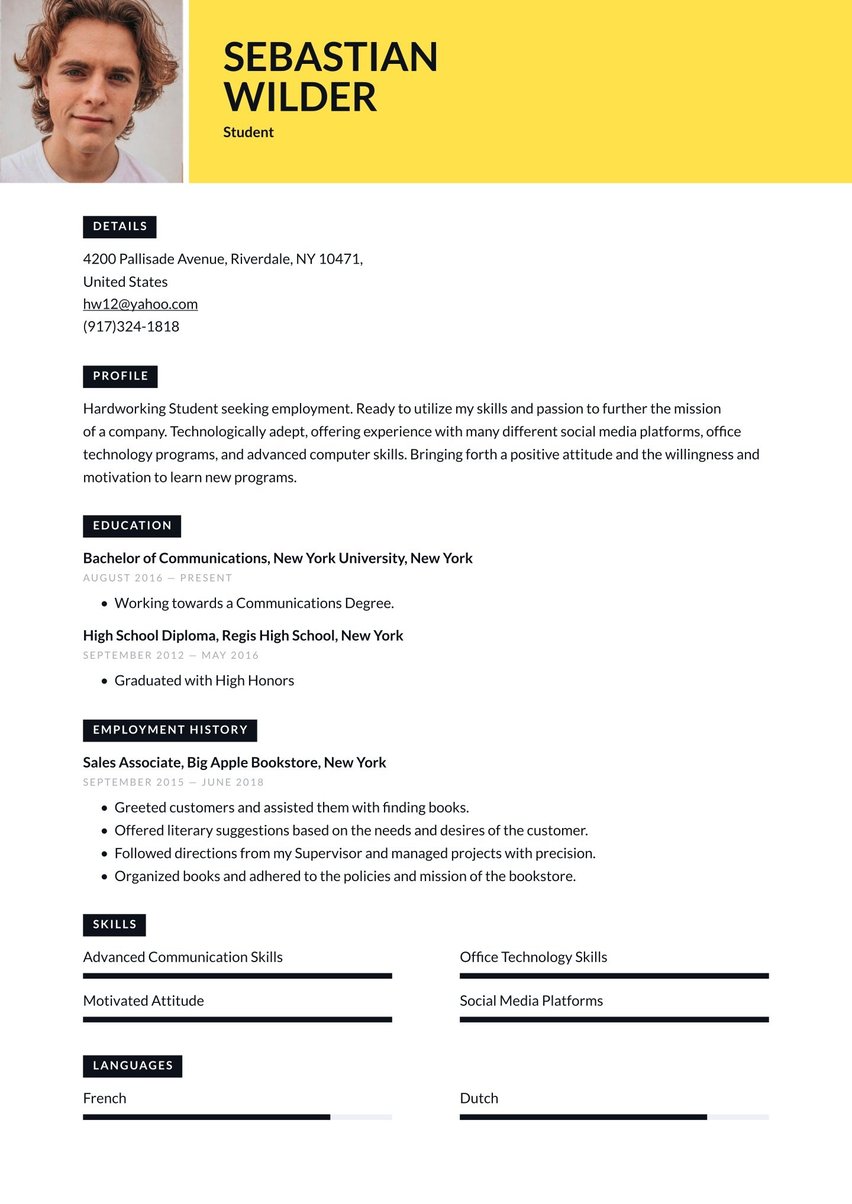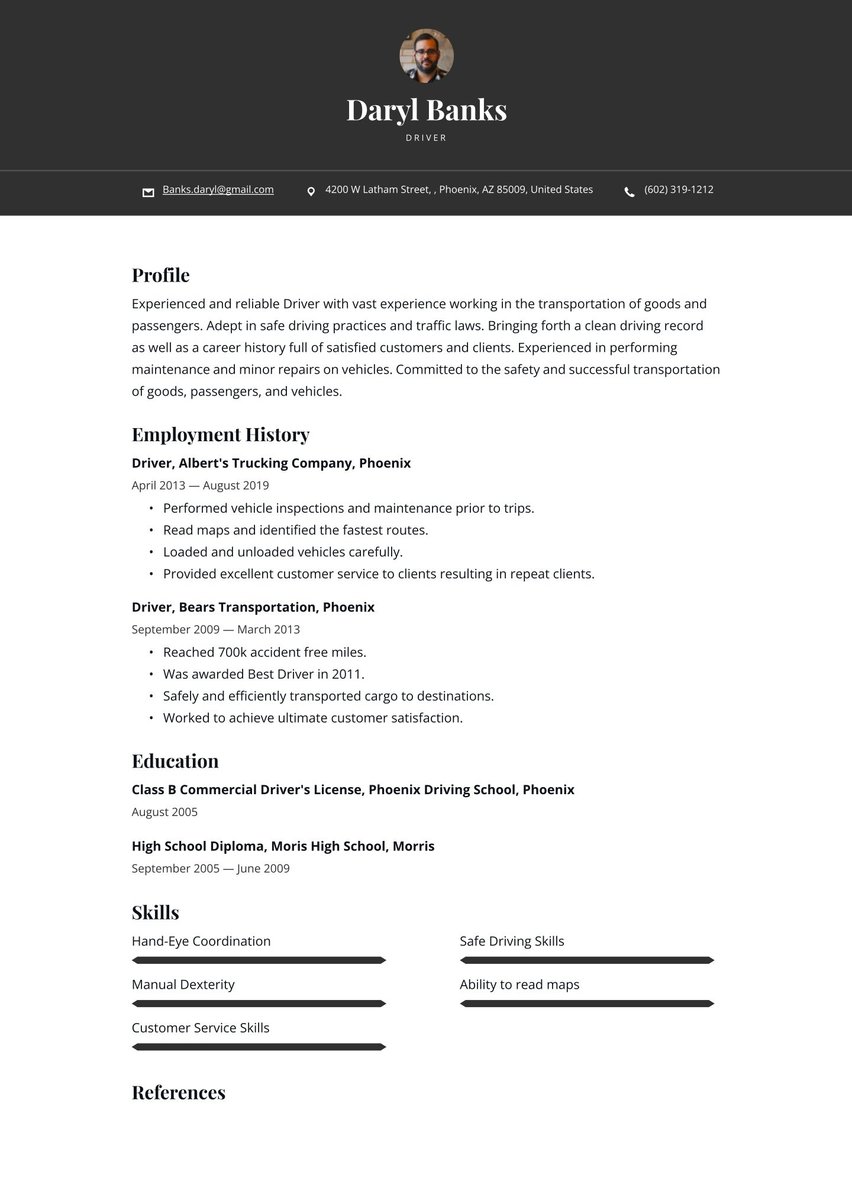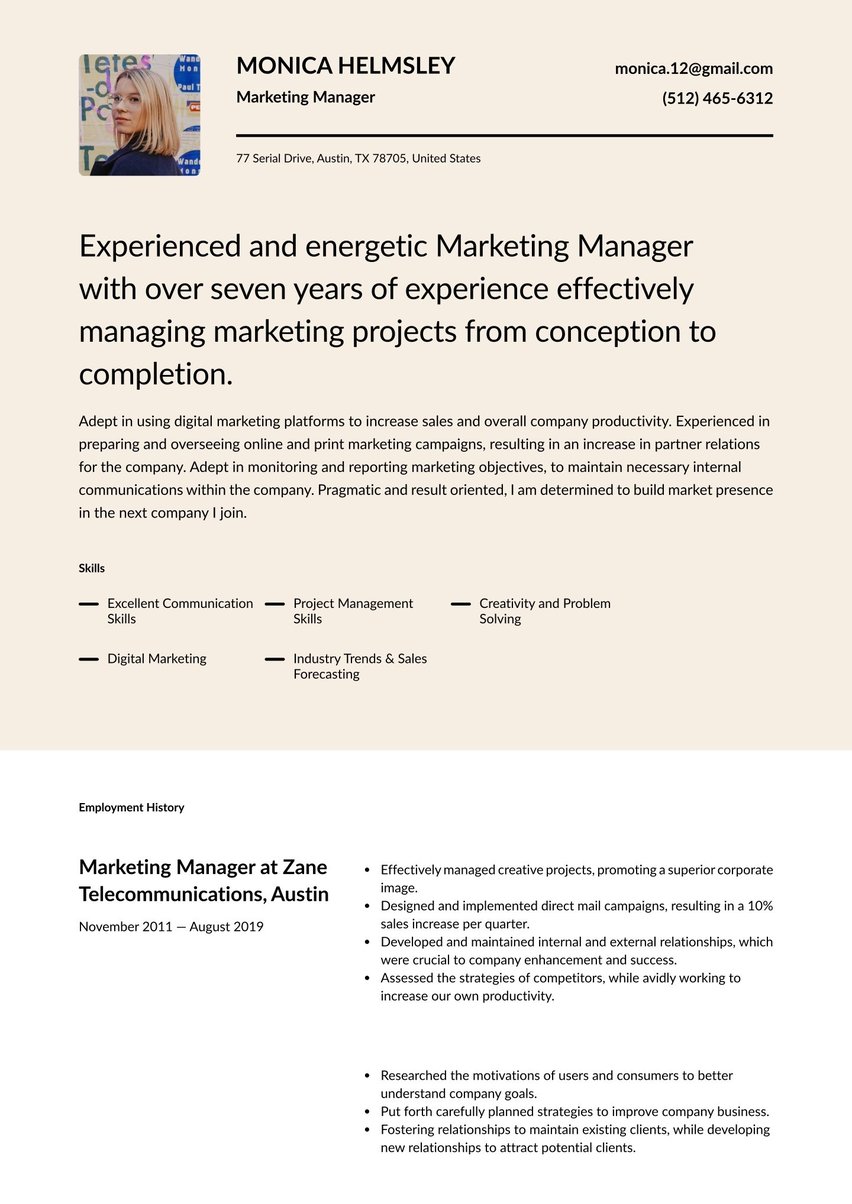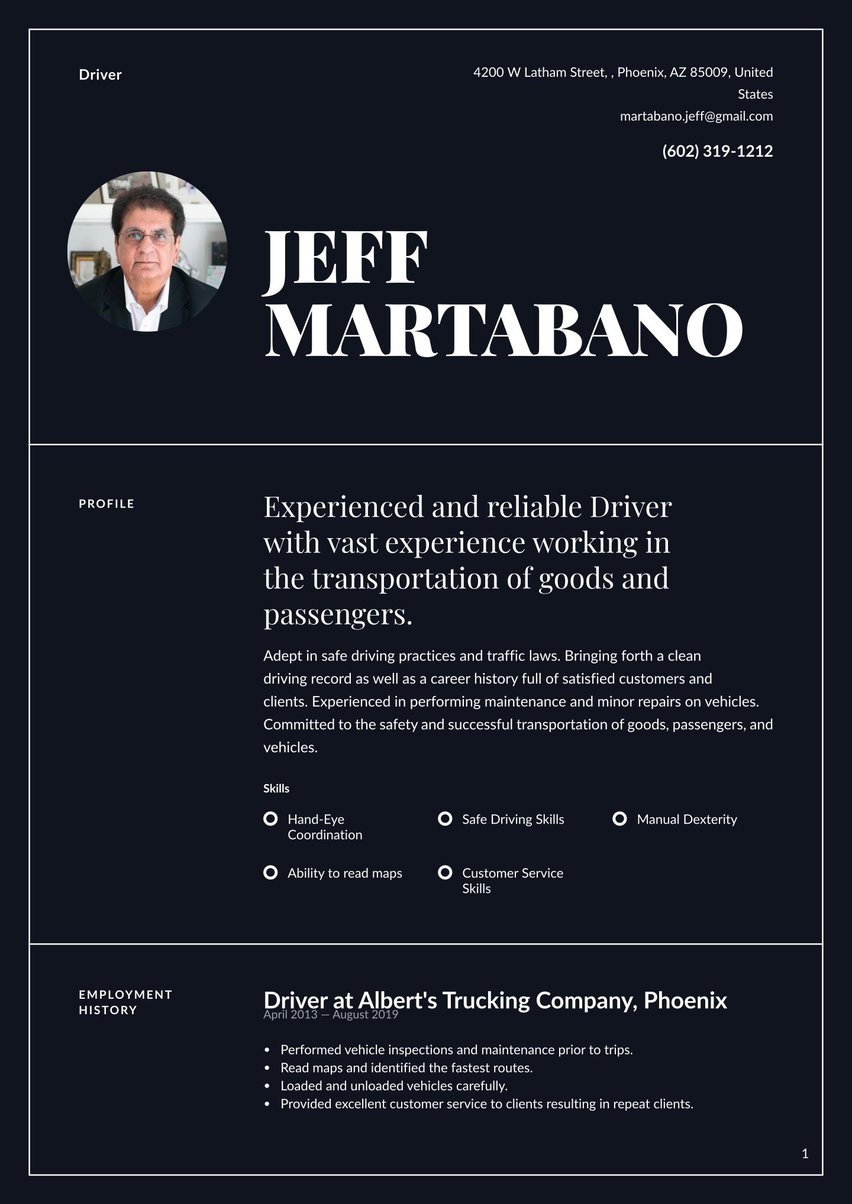Highly certified Emergency Medical Technician (EMT) with solid background of success in emergency services. Proven experience working with well-oiled teams in rapid responses to fire and medical emergencies. Highly capable and experienced at working in fast-paced, hazardous environments, and remaining on call on a 24/7 basis.
07/2019 - present, Emergency Medical Technician (EMT) , Boston Fire Department, Boston, MA
- Perform various emergency-response and fire-suppression services.
- Operate and maintain emergency response equipment and vehicles.
- Maintain detailed reports of ambulance calls and patient data for billing and invoicing.
- Interact calmly and efficiently with injured and uninjured parties at emergency scenes.
04/2015 - 07/2019, Emergency Medical Technician (EMT) / Paramedic, Massachusetts General Hospital, Boston, MA
- Operated emergency vehicles in responding to emergency calls.
- Worked closely with team members to arrive at scenes quickly, safely and fully prepared.
- Utilized and maintained a variety of medical equipment.
- Performed basic-to-advanced life support and CPR.
- Participate in public relations activities, including emergency preparedness and fire prevention programs.
12/2014 - 02/2015, Emergency Medical Technician (EMT) Certificate, Bunker Hill Community College, Boston, MA
- Ability to Multitask
- Ability to Work in a Team
- Ability to Work Under Pressure
- First Aid & CPR
- Fire Protection Systems
- Emergency Response
- Emergency Equipment
- Incident Response
- Risk Assessment
- Emergency Preparedness
07/2019 - 06/2020, Certified Firefighter 1,
04/2022 - 05/2022, CPR/AED ,
06/2016 - 08/2016, Pre-Hospital Trauma Life Support,
Emergency medical technicians (EMTs) are the unsung heroes of the country. These professionals faced intense stress and danger during the pandemic, showing remarkable courage to save lives while safeguarding themselves and others. If you work in this fast-paced field, you need to show you have what it takes to thrive under pressure with an EMT resume.
EMT resume examples by experience level
Whether you're advancing in your career or are pursuing EMT certification, it’s important to put your best foot forward when you’re applying for these roles.
Resume guide for an EMT resume
Reach your full potential with resume.io. Our guides and resume examples cover over 500 professions, and our resume builder makes creating a compelling resume easier than ever.
This resume guide and corresponding EMT resume example will cover the following:
- How to write an EMT resume
- Choosing the right resume format for an EMT
- How to add your contact information
- Using summaries
- Adding your EMT experience
- Listing education and relevant experience
- Picking the right resume design/layout
- What the healthcare market looks like, and what salary you can expect
How to write an EMT resume
Working as an emergency medical technician may be very different from other professions, but that doesn’t mean your EMT resume should be. Your CV should contain the following elements common to most resumes:
- The resume header
- The resume summary (aka profile or personal statement)
- The employment history section
- The resume skills section
- The education section
Your resume needs to sell your skills and experience to the hiring manager. EMT professionals are under an immense amount of pressure. It’s your job to convince a recruiter that you have what it takes to stay strong and carry on. But how do you convey that via your resume?
The first step is to define your unique selling proposition. This is your strongest attribute and whatever sets you apart from the crowd. Ensuring that you have a solid message will mean that you grab the hiring manager’s interest right from the start. It could be your track record, a specialism, or having worked in a particularly high-stress environment.
Let’s take a look at more ways to make your resume stand out from the crowd:
- Highlight accomplishments instead of your duties. The hiring manager already knows the day-to-day tasks of an EMT. Listing them won’t bowl them over. Instead, tie each of them to a result or an achievement. What impact did your work have?
- Avoid generic resumes. You should adapt each version of the resume to the specific employer. That means doing your research ahead of time and learning what the hospital or service needs from EMT workers. The more you know, the better your chances.
- Make sure you use a clear layout for your resume. If in doubt, you can use one of our tried and tested resume templates to perfect the look.
- Be sure to optimize your resume with appropriate keywords. That means it won’t be filtered out by ATS screening software. You can also use an ATS resume template.
Optimize for the ATS
ATS stands for Applicant Tracking Systems. This software reviews incoming resumes and ranks them by how well they meet the criteria of the role. The system uses keyword scanning to see how well you fit the role. To increase your chances of success, look at the original job advert, pick out keywords, and then weave them into your resume content.
For example, the EMT job posting lists the following requirements:
- “Emergency medical technicians (EMT)”
- “10+ years of experience”
- “Trained in Basic life support (BLS)”
- “CPR certification”
Your resume profile summary, when integrating the keywords, could read:
“Emergency Medical Technician (EMT) with 10+ years of experience delivering high-quality emergency care in fast-paced environments. Skilled in patient assessment and crisis response, with training in Basic Life Support (BLS) and CPR certification.”
To learn more about conquering the ATS, check out our article Resume ATS optimization.
Choosing the right resume format for an EMT
So, what is the best resume format for your needs? The goal of your EMT resume is to make it as easy as possible for recruiters to see that you are an excellent candidate.
That means sticking with the tried-and-true reverse chronological order format unless you have a compelling reason not to. This style mostly affects your employment history section, which will begin with your most recent job and work backward.
You may have reason to veer from this format if you are looking for your first EMT position, you have changed careers, or you have a large gap in your employment history. In those instances, consider one of the alternative resume formats we detail here.
When it comes to the design, use a clean, modern layout that effortlessly conveys your skills and experience to the hiring manager.
Include your contact information
Next, you need to include some contact information. This should be clear so—if a hiring manager wants to get in touch—it’s easy to do so. Your resume header is your resume’s business card.
Here are the details you need to include as standard:
- Full name & title. Start with your first and last name. Add the title of the role.
- Professional email address. Add a plain email, such as firstname.lastname@gmail.com. Don’t use an unprofessional email address.
- Phone number. Include a number that you use regularly, with a professional voicemail greeting.
- Location. Only your city and state. Don’t include your whole address as this can be considered unsafe. Note ' Willing to Relocate' here if applicable.
- LinkedIn. While not always common for healthcare professionals, LinkedIn is a great tool. If your LinkedIn profile is active and reliable, include it here.
Don’t include:
- Date of birth. This could lead to age discrimination.
- Personal details. Marital status, social security number, passport number, etc.
- Photo or headshot. This is not appropriate for an EMT role.
- Social media links: You should not include your TikTok, Instagram, or Facebook.
Mary Smith
EMT
New York, NY
0183 238 0832
m.smith@email.com
Mary Smith
Smart and reliable EMT
Apt 13, Green Street, New York, NY
0183 238 0832
m.smith@email.com
Make use of a summary
The summary paragraph of your EMT resume is the best place to show off your calm and compassion. This paragraph also serves as a personal introduction to your career and accomplishments. While the rest of your application document will be bulleted lists, here you can reveal your voice.
Start by introducing your greatest career achievement using strong descriptive words and action verbs. This is also an opportunity to explain why you chose this career and why you are so keen on the particular position.
EMTs are often called to tense, dangerous, or emotional situations. Try to express the style you employ to ease the stress for everyone involved while acting quickly and professionally to assist the person in need and their loved ones.
Don’t simply repeat information that can be found elsewhere on the page. Instead, you should make sure that you’re giving the hiring manager something new.
For example, you might write:
- “Dedicated to ensuring patient safety and experienced in working collaboratively within emergency response teams, seeing up to 60 patients per shift.”
Need inspiration for your summary? Check out our related resumes:
You can find adaptable EMT resume examples summary below:
Compassionate entry-level EMT with hands-on training and recent certification, including Basic Life Support (BLS) and CPR. Demonstrated ability to respond quickly and efficiently to emergency calls. Completed over 100 hours of field training with emergency response teams, providing patient support and assisting in transport to medical facilities.
Highly certified Emergency Medical Technician (EMT) with solid background of success in emergency services. Proven experience working with well-oiled teams in rapid responses to fire and medical emergencies. Highly capable and experienced at working in fast-paced, hazardous environments, and remaining on call on a 24/7 basis.
Senior Emergency Medical Technician (EMT) with 10+ years of experience, administering life-saving interventions to over 1,000 patients. Ability to deliver high-level patient care, with a 98% patient stabilization rate and consistently meeting response times under 10 minutes. Trained in Basic Life Support (BLS) and CPR-certified, with a focus on trauma care and effective communication.
Outline your EMT work experience
Unless you are entering the job market for the first time, the employment history section of your EMT resume will take up the bulk of your document. Start with your most recent position and use strong action words to detail your accomplishments.
Remember, you only need to go back over the last 10-15 years. If you’ve been in the industry longer, you don’t need to list every single position you’ve held. Review the job ad to make sure you are choosing examples that show off your expertise in the areas important to your future employer.
Try to begin each item with a strong action word that describes your style and avoid the over-used “responsible for,” “helped,” or “aided” if at all possible. Try, instead, “diagnosed,” “communicated,” or “performed.”
Offer hard facts and data when appropriate. These are known as results-based points and can help to secure an interview with a potential employer. For example, here’s what not to do:
- “Responded to calls for emergencies”
- “Stabilized patient's vital signs”
- “Led a small team of paramedics”
You can easily improve these statements by adding more color to them and also including some metrics. Let’s take a look at how that may work:
- “Responded to 100+ 911 calls for emergencies including cardiac arrest, gunshot wounds, and COVID-related respiratory distress.”
- “Stabilized 98% of critical patients en route to medical facilities.”
- “Led a team of 6 EMTs and paramedics during high-risk incidents, maintaining a 100% compliance rate.”
Emergency Medical Technician (EMT) at Boston Fire Department, Boston, MA
July 2019 - Present
- Perform various emergency-response and fire-suppression services.
- Operate and maintain emergency response equipment and vehicles.
- Maintain detailed reports of ambulance calls and patient data for billing and invoicing.
- Interact calmly and efficiently with injured and uninjured parties at emergency scenes.
Emergency Medical Technician (EMT) / Paramedic at Massachusetts General Hospital, Boston, MA
April 2015 - July 2019
- Operated emergency vehicles in responding to emergency calls.
- Worked closely with team members to arrive at scenes quickly, safely and fully prepared.
- Utilized and maintained a variety of medical equipment.
- Performed basic-to-advanced life support and CPR.
- Participate in public relations activities, including emergency preparedness and fire prevention programs.
How to write an EMT resume with no experience
If you’ve just become certified as an EMT, congratulations! Of course, you will not have an extensive employment history section, but you can have an excellent resume nonetheless. Should you have no direct experience on your resume, don’t panic.
Emphasize your education and certifications by moving those sections (if you chose to create two) above your work history. You can also emphasize your transferable skills. These are the talents that you’ve picked up in previous roles and positions.
During your training, you will have completed some placement hours. You should draw upon these when writing your resume. Make it clear what you’ve experienced and how that has shaped your journey towards becoming an EMT professional.
You may also want to explore why you have chosen this career path. What is it about your personality that has prepared you for a position in this fast-paced environment? Your resume—and the cover letter—is the perfect place to share this interesting story.
Include the relevant key skills that make you an EMT professional
What are the standout abilities and traits that make you excellent at your job? These compose the skills section of your EMT resume. The key here is finding the right balance between your medical and technical knowledge (or hard skills) and your interpersonal communication (or soft skills.)
You may want to list all the medical equipment you use, and you should list specific equipment here or in your employment history section especially if it is mentioned in the job ad, but don’t underplay your soft skills. While many people can learn CPR, understanding how to talk to a distraught spouse is a lot tougher.
Match what you consider your key assets with the job listing to give you the best chance of beating the ATS.
Here’s what the skills box looks like in our EMT resume template.
- Ability to Multitask
- Ability to Work in a Team
- Ability to Work Under Pressure
- First Aid & CPR
- Fire Protection Systems
- Emergency Response
- Emergency Equipment
- Incident Response
- Risk Assessment
- Emergency Preparedness
Here are a few ideas for getting specific with the soft skills that may differentiate you from other candidates:
- Problem solving. The crux of your job is figuring out the problem and taking the first steps to solve it.
- Teamwork. You are a member of a medical team as well as having a partner and you need to both express the issues accurately and listen carefully so that you can execute the orders of physicians.
- Situational awareness. You must be able to assess the entire scene of the emergency while focusing on the patient’s needs.
Always refer back to the job advert to see which skills you should include.
Detail your education & relevant EMT certifications
The education section is vital to your success when applying for EMT roles. Your core qualifications should be listed in the education section of your EMT resume. Alternatively, you may call this section “Certifications.” While college degrees are not a requirement, if you have one, you should list it clearly for the employer.
Let’s take a look at the certificates and training you may include:
- Degrees. If you did attend college, now is the time to shout about it. This is especially valuable if you happen to have studied a healthcare-related topic.
- Standard EMT certification. Most states accept the National Registry of Emergency Medical Technicians (NREMT) certification course.
- Additional medical training. You may have advanced your training with extra certificates, such as Basic Life Support (BLS) Certification, CPR Certification, or Advanced Cardiac Life Support (ACLS) Certification.
- Specialized training. If you’ve specialized in a certain area—for instance, if you have Wilderness EMT Certification (WEMT)—you can also include it here.
Make sure that all of the training you include is relevant to the role. You don’t want to waste vital space on your EMT resume.
Emergency Medical Technician (EMT) Certificate, Bunker Hill Community College, Boston, MA
December 2014 - February 2015
Pick the right resume layout and design for an EMT resume
The layout of your EMT resume is almost as important as what you have to say. That’s because first impressions are lasting. If you showed up at an emergency in a dirty ambulance looking nervous or unkempt, you would not instill confidence.
The design of your resume needs to tell employers that you are professional and organized, but calm. For that reason, stay away from busy resume designs. Go with cool, relaxing colors and subtle design elements.
Here are some tips to help get you there. You can also choose from one of our resume templates. These templates have coordinating cover letter options as well.
- Use fonts that are easy to read and limit yourself to two—one for section headings and one for the text.
- Leave margins of at least one-half inch all the way around.
- Keep color to a minimum.
- Avoid typos and other errors that may eliminate you from the running by carefully proofreading and using a resume builder that incorporates spellcheck.
EMT text-only resume example
Profile
Highly certified Emergency Medical Technician (EMT) with solid background of success in emergency services. Proven experience working with well-oiled teams in rapid responses to fire and medical emergencies. Highly capable and experienced at working in fast-paced, hazardous environments, and remaining on call on a 24/7 basis.
Employment history
Emergency Medical Technician (EMT) at Boston Fire Department, Boston, MA
July 2019 - Present
- Perform various emergency-response and fire-suppression services.
- Operate and maintain emergency response equipment and vehicles.
- Maintain detailed reports of ambulance calls and patient data for billing and invoicing.
- Interact calmly and efficiently with injured and uninjured parties at emergency scenes.
Emergency Medical Technician (EMT) / Paramedic at Massachusetts General Hospital, Boston, MA
April 2015 - July 2019
- Operated emergency vehicles in responding to emergency calls.
- Worked closely with team members to arrive at scenes quickly, safely and fully prepared.
- Utilized and maintained a variety of medical equipment.
- Performed basic-to-advanced life support and CPR.
- Participate in public relations activities, including emergency preparedness and fire prevention programs.
Skills
- Ability to Multitask
- Ability to Work in a Team
- Ability to Work Under Pressure
- First Aid & CPR
- Fire Protection Systems
- Emergency Response
- Emergency Equipment
- Incident Response
- Risk Assessment
- Emergency Preparedness
Education
Emergency Medical Technician (EMT) Certificate, Bunker Hill Community College, Boston, MA
December 2014 - February 2015
EMT job market and outlook
The EMT job market is currently growing at a rate of 6%—which is faster than average. The US Bureau of Labor Statistics estimates that there were 270,400 roles in this industry in 2023, with a projected 16,200 more roles opening up by 2033. That means that now is an excellent time to find your next job. Make sure your EMT resume is up to scratch now.
What type of salary you can expect as an EMT
As an EMT, you can expect to make an average of $44,780 per year, according to the US Bureau of Labor Statistics. That equates to around $21.53 per hour.
Key takeaways for an EMT resume
You need a stellar resume to land your next EMT role. Use your summary to highlight both your accomplishments and your personality. This is the place to explain how you reassure patients and their loved ones while coping with stressful emergencies. Put your people skills in the forefront: all EMTs have CPR training, but not all can be calm in the midst of chaos.
Begin your job search with our resume builder, but take it to the next level with resume.io.


.jpg)

.jpg)



























